Individual Quick Freezing (IQF)
IQF or Individual Quick Freezing is commonly used for freezing fruits, berries, vegetables, French fries, shrimp, and small pieces of meat and poultry. This equipment, by significantly reducing freezing time, ensures that ice crystals are so small that they do not cause destruction and rupture of the product’s texture, leaving the cellular structure of the product vastly intact. Parameters such as aroma, visual appearance, and taste of the products are directly related to their freshness and the health of their cellular structure.
The IQF machine is a fluidized freezer that, by creating a high-speed air flow at temperatures of -35 to -40 degrees Celsius, freezes food items separately in a short period. In other freezing methods performed in blast freezer rooms or plate freezers, the products freeze into block shapes and stick together. However, in the IQF method, the products freeze individually and separately.
IQF or Individual Quick Freezing is one of the most important innovations in the food industry. IQF was developed in the early 20th century and is still used today as a modern and effective solution for individually freezing various products, including fruits, vegetables, and pieces of meat, chicken, and fish.
Comparison of IQF with other freezing methods
The first mechanized freezer devices included a conveyor belt with a stainless-steel mesh in a freezing tunnel, which fulfills the need for freezing for a product continuously. The main weakness of this system was poor control over the air flow, leading to low efficiency in the heat transfer and freezing process. IQF machine, with precise control of the air flow, circulate cold air over the product layers, ensuring good contact between cold air and product pieces which leads to increasing the efficiency of the freezing process.
Function and operation of IQF
In the individual quick freezing or IQF method, products are directed into a cabin using a stainless-steel mesh conveyor belt. Inside the IQF cabin, cold air at a temperature of -40 degrees Celsius circulates rapidly over the product with high-speed fans, reducing the core temperature of the product to -18 degrees Celsius. After freezing, the products exit from the other side of the IQF and are prepared for packaging and storage in the cold storage.
IQF machines can have freezing capacities ranging from 500 to 15,000 kilograms per hour. Depending on the IQF machine’s capacity and design requirements, a refrigeration system using either freon or ammonia provides the cooling for the IQF.
Components of IQF Machine
The IQF (Individual Quick Freezing) machine is composed of various components. Below, we introduce the main components of the IQF machine:
IQF Conveyor belt
The transfer of products into and out of the IQF cabin is the responsibility of the conveyor belt. This belt can be made of stainless steel, food grade plastic, or aluminum and possesses the following properties:
- It moves easily and smoothly to prevent product damage and loss.
- The conveyor belt has vibration capability to prevent products from sticking together and to the belt itslef.
- Easy cleaning of the IQF conveyor belt minimizes water and chemical cleaner consumption and reduces cleaning time.
- It complies with hygiene standards such as FDA and EC1935/2004 for direct contact with food.
IQF Conveyor belt drive
The conveyor belt in the IQF machine is powered by an electric motor with power proportional to the machine’s capacity. The speed and torque of the conveyor belt are fully adjustable through a touch screen HMI (Human-Machine Interface) using a Variable-Frequency Drive (VFD) and a gearbox.
Air circulation fans
Fans in the IQF machine are designed and selected based on the freezing capacity to create the necessary air circulation and speed over the product’s surface. These industrial fans are suitable for operation at freezing temperatures and are easy to service and clean.
IQF Evaporator
The cabin’s air cooling is managed by the IQF evaporator, which can be made of aluminum, dip-galvanized steel (for ammonia refrigerant use), or copper (for freon refrigerant use). The fin space of the Evaporator is a combined-type 12-15 millimeters to maximize time intervals between two defrosts.
IQF machine Body
The IQF body is made of steel sheets, profiles, and internal equipment (except for motors, gearboxes, and special items) is made up of stainless-steel grade. The machine’s walls are made of 15-centimeter polyurethane panel insulation with a density of 40 kg/m3, covered internally with stainless steel sheet with a thickness of 0.8 millimeters. Adjustable openings are installed at the machine’s entrance and exit section to minimize energy loss.
Electrical Panel
The electrical panel of the IQF machine is assembled with world-class equipment and standards. The machine’s control is easily done through an automation system and an HMI touchscreen interface, managing parameters such as conveyor belt speed, IQF machine temperature, defrost management, and more.
Main features of Atlas Refrigeration IQF Machine
- Durable conveyor belt: The conveyor belt is resilient and durable, made of stainless steel with grade 304 (grade 316 stainless steel is also available upon request).
- Evaporator coil: The evaporator coil is constructed from hot dip-galvanized, aluminum, or copper materials, exhibiting high efficiency and equipped with defrost system equipment.
- Powerful air circulation fans: The machine is equipped with high-powered fans that ensure efficient air circulation.
- Packaged prefabricated IQF Machine: The IQF machine is available for sale in a packaged form, assembled at the factory.
- Use of hygienic materials: All internal components utilize aluminum and grade 304 stainless steel.
Advantages of IQF
- Preservation of product quality: IQF effectively prevents the breakdown of cellular structure in food materials during the freezing process, maintaining freshness and nutritional content. The quality of IQF-frozen products remains consistent before and after thawing.
- Reduced freezing time: IQF significantly reduces freezing time compared to other methods. For instance, freezing peas using traditional methods takes a minimum of 4 hours, whereas IQF machines can reduce this time to as little as 4 minutes. This minimizes surface evaporation, resulting in minimal weight loss. The crucial factors contributing to weight loss—freezing time and freezing temperature—have reached an optimal point in IQF machines.
- Minimized food loss: IQF freezes food pieces individually, allowing for separate packaging. This method facilitates easy access to the needed quantity without thawing the entire package. The reduced speed of food spoilage can be particularly attractive for businesses such as restaurants and hotels.
Disadvantages of IQF Rapid Freezing
- Cost of IQF machine: The cost of IQF machines is not budget-friendly compared to similar capacities in other methods, such as blast freezing. However, it’s essential to note that the freezing quality in the IQF method is significantly superior.
- Increased space requirement: The IQF machine requires more space compared to freezing rooms or plate freezers. The length of the conveyor belt, which moves products for freezing, contributes to the overall length of the IQF machine.
Types of IQF machines
- Linear IQF Machine (Continuous): The linear IQF machine directs products into the IQF cabin through a conveyor belt equipped with a vibrator from one side and freezes them on the other side. The entry and exit of products in this type of IQF machine are in a straight line. The freezing capacity of this model can range from 1000 to 15000 kilograms per hour. The machine is connected to the motor room with refrigerant pipes (freon or ammonia). This model is commonly used for non-leafy vegetables such as peas, green beans, corn, green beans, carrots, cabbage, and French fries (partially cooked potatoes).
- Spiral freezer: This model is primarily used for freezing in food processing factories. The freezing capacity in spiral freezer usually ranges from 500 to 5000 kilograms per hour. Spiral freezers are typically used for products like chicken and meat pieces, cutlets, samosas, hamburgers, and raw or semi-prepared fish.
- IQF with Liquid Nitrogen:
IQF with Liquid Nitrogen: Liquid nitrogen evaporates at -196 degrees Celsius at atmospheric pressure. In the IQF machine with liquid nitrogen, food materials are directed into the freezing chamber by a conveyor belt, where the temperature is set between -50 to -190 degrees Celsius using liquid nitrogen evaporation. Liquid nitrogen is delivered from the cryogenic tank to the nitrogen nozzles and is injected into the chamber at various sections through ultra-fine nozzles (Micro-Hole). Meanwhile, exhaust fans quickly expel the evaporated nitrogen from the cabin to the open air. The food materials temperature will rapidly reduce during the contact of super cold air inside the chamber.
Introduction to Liquid Nitrogen: Liquid Nitrogen, in fact, is nitrogen in a liquid state at temperatures below -195.79 degrees Celsius at 1 atmosphere pressure. Liquid nitrogen is produced by distilling individual components of air. It is a colorless liquid with low viscosity widely used as a coolant. Approximately 80% of the air we breathe is nitrogen gas, so there is no particular health concern when working with this substance. However, it should be noted that direct contact with the skin can cause severe burns and tissue damage.
Physical properties of Liquid Nitrogen: Liquid Nitrogen, or LN2, is a neutral, odorless, colorless, non-flammable, and extremely cold substance. It is a cryogenic fluid that can rapidly freeze living tissues. To handle and store liquid nitrogen, specialized vacuum flasks are required. Depending on the size and design, the storage time in these flasks ranges from several hours to several weeks. The development of super-insulated vacuum flasks has allowed for longer-term storage and transportation of liquid nitrogen with a loss of 1% per day.
IQF with Liquid Nitrogen | Food and hygienic aspects: Nitrogen actually makes up more than 78% of the air we breathe, so there is no concern when it comes into contact with food and consumables. On the other hand, due to the very high freezing speed in the IQF process with liquid nitrogen, the ice crystals formed are very small, causing no harm to the cellular structure of the product. Therefore, the quality of the product, including appearance, taste, and color, is preserved to a very high extent.
The capacity of IQF machines with liquid nitrogen ranges from 500 kilograms per hour to over 10,000 kilograms per hour and is customizable. This freezing method is suitable for various food items, including fish, shrimp, cut and processed meat, fruits, pastries, bread, etc.
IQF Machine Price
The price of an IQF machine depends on various factors, including the type and capacity of the product, the entering and desired leaving product temperature, the type of rapid freezing system, the type of refrigeration system (freon or ammonia), and the brand of equipment. For accurate pricing information on refrigeration products or project, please contact us.
Conclusion
Atlas Refrigeration Company has a long history in the design, manufacturing, supply, and implementation of various IQF systems. What consistently sets our projects apart is the provision of tailored solutions based on the specific needs and budget of each project. The advantages of this type of design include reducing investment costs, increasing efficiency and freezing speed, and ensuring complete alignment of equipment with the required refrigeration load.
Related posts
IQF (Individual Quick Freezing)
Valves and Control Devices in Ammonia and Freon Refrigeration Systems The variety of valves and control devices in refrigeration systems
What Is Chicken Cold Storage? Chicken cold storage refers to specialized equipment designed for preserving poultry products like chicken
Fish and Shrimp Cold Storage Systems – Preserving Freshness Fish and shrimp cold storage facilities play an important role in
What is Blast Freezer and How is it Used? Atlas Refrigeration Co., Ltd. specializes in manufacturing and installing advanced blast
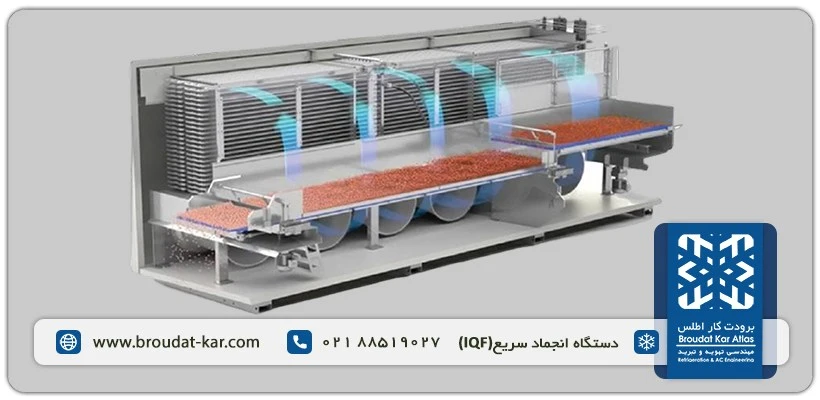
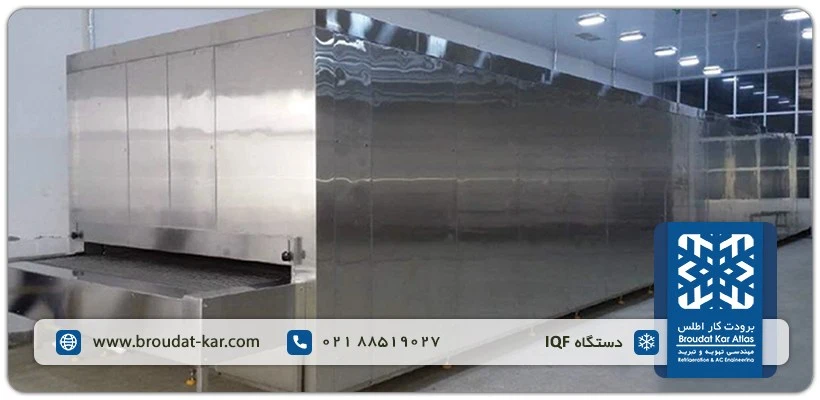
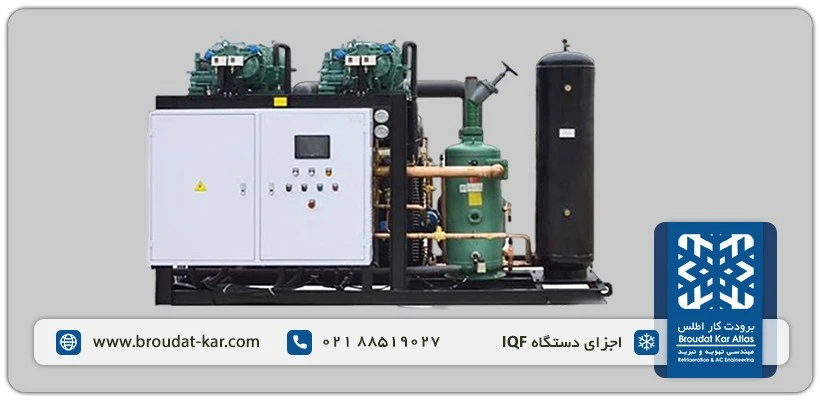
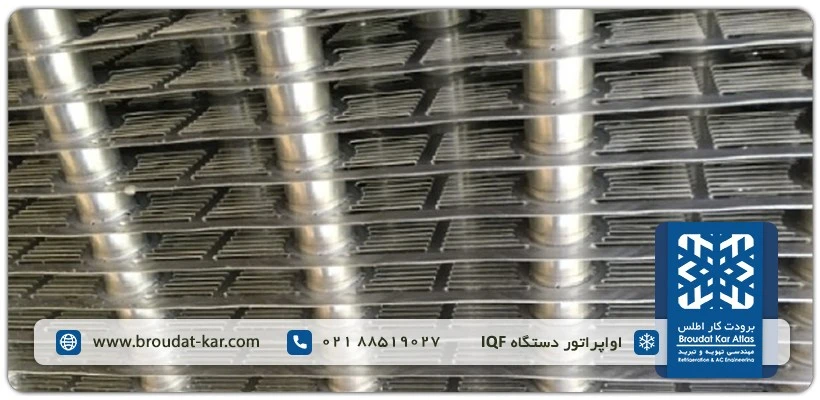
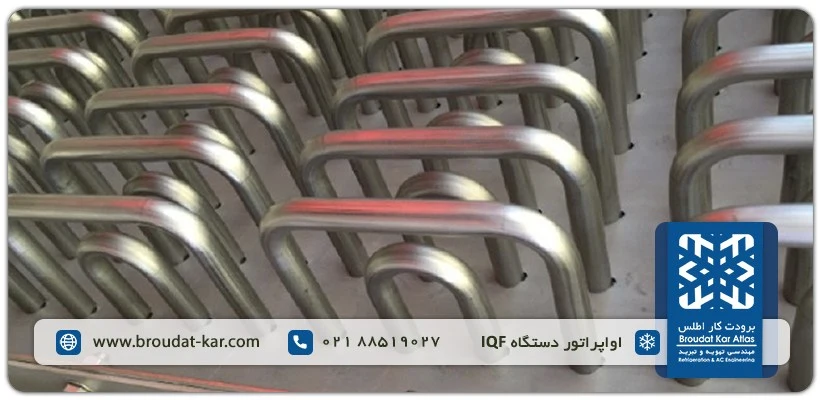
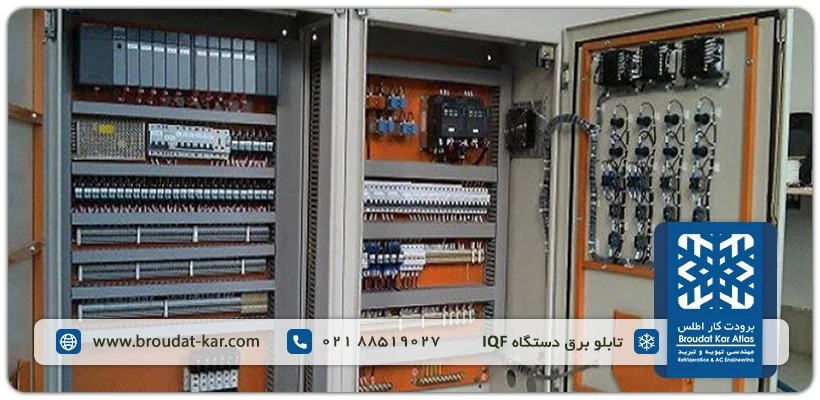
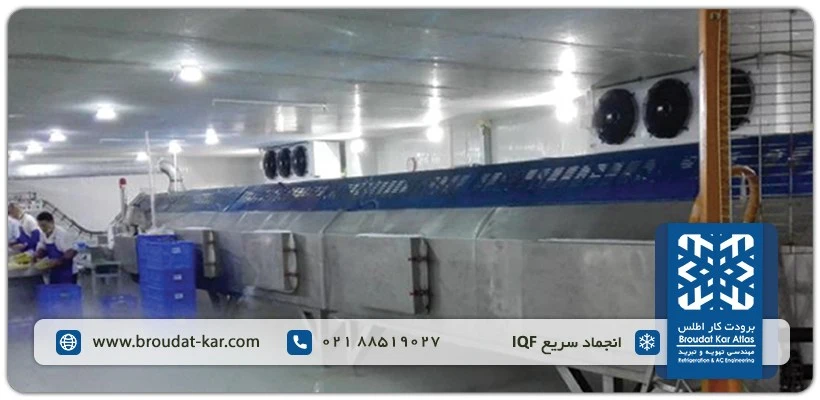
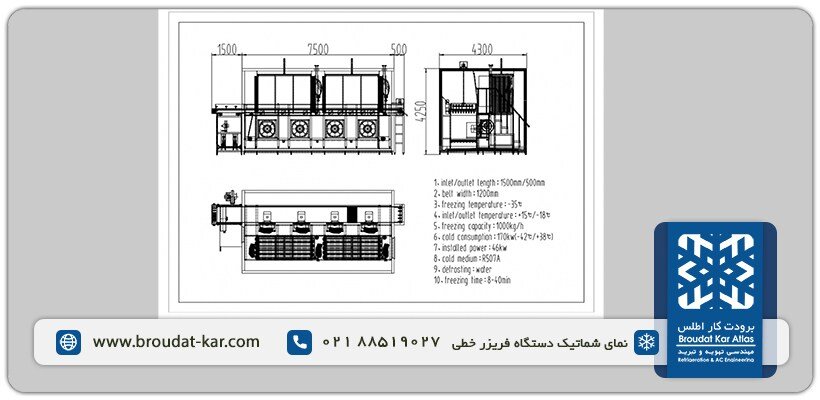
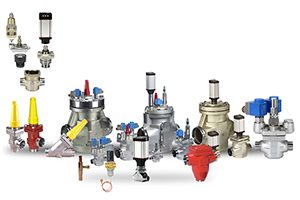
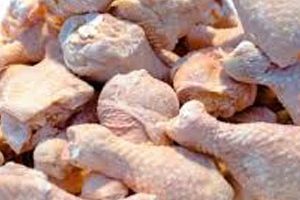
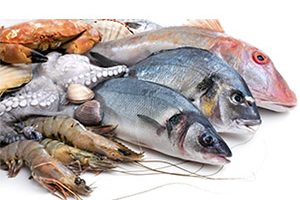
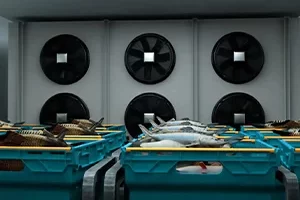
2 تعليق
Hello Good evening
– We would like to now cold IQF / Liquid Nitrogen options and – 40 Deg. Celcius // blast air
for chicken – whole up to 2.5 Kg. / parts 500gm
– price for Cold Storage 20 ft / cold store for -20 Deg. celcius
Equipment to be installed in Africa Rwanda
please, provide quotation in name of AmahoroTC Farms Ltd.
Eng. Ayman Hedayat
Whatsapp +201222145*** and Tel. +250 79257***
Hello Eng. Ayman,
Thank you for your inquiry. For detailed pricing and technical discussion, kindly contact us directly via WhatsApp so we can provide you with a proper quotation and further guidance.
Please send us a message on WhatsApp and our team will be happy to assist you.
Best regards,
Atlas Refrigeration Co. Ltd.